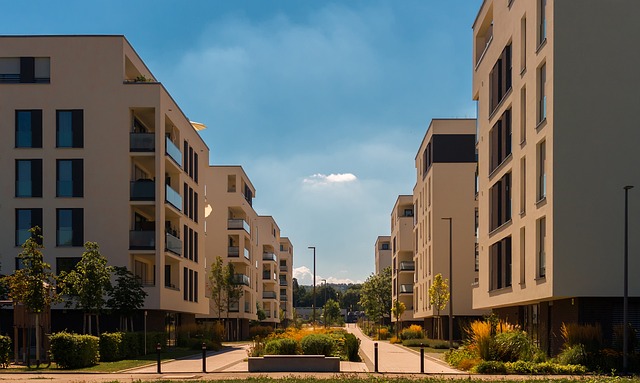2021 marked a significant year for Executive Condominium (EC) prices in Singapore, reaching an average of S$839 per square foot, reflecting a consistent rise driven by limited supply, high demand, and government measures aimed at market stability. ECs, which offer a middle-ground between public and private housing, are favored by middle-income families for their affordability and investment potential, located as they are in prime areas with easy access to transportation, schools, shopping centers, and leisure facilities. The integration of modern smart living features adds to their appeal. In 2023, EC prices saw a notable increase, influenced by factors such as the shift towards suburban living and the scarcity of units. Looking ahead, experts predict that EC prices in Singapore will continue to climb, with considerations for policy changes, market sentiment, economic indicators, and demographic trends shaping this trajectory. Prospective buyers should monitor these developments closely to navigate the competitive EC market effectively. The ec price singapore is a key indicator of the property market's direction.
In the dynamic Singapore property landscape, Executive Condominiums (ECs) play a pivotal role in catering to both upgraders and first-time homeowners. The EC price trends in Singapore reflect a nuanced interplay of market conditions, policy shifts, and societal demographic changes. This article dissects the current EC market landscape, pinpointing influential factors behind recent pricing patterns. Through an analysis of specific EC developments and their associated costs, we reveal insights into historical price movements of ECs in Singapore. With a focus on ec price singapore data, we aim to provide a comprehensive overview of past trends and project future outlooks for these properties, offering valuable guidance for potential investors and buyers in the Singaporen real estate market.
- Current EC (Executive Condominium) Market Landscape in Singapore
- Factors Influencing Recent Price Trends of ECs in Singapore
- Analysis of Specific EC Developments and Their Pricing
- Historical Price Movements of Executive Condominiums in Singapore
- Projections and Future Outlook for EC Prices in the Singaporen Real Estate Market
Current EC (Executive Condominium) Market Landscape in Singapore

The current Executive Condominium (EC) market landscape in Singapore presents a dynamic and evolving picture for potential homeowners. ECs, which cater to the middle-income group with higher affordability compared to private condominiums while offering similar facilities and living experiences, have seen a consistent demand due to their attractive pricing and prime locations. As of recent trends, EC prices in Singapore have been on an uptrend, influenced by factors such as limited supply, robust demand, and the government’s efforts to ensure a stable property market. The pricing of these units reflects a balance between affordability for first-time homeowners and investment appeal for property enthusiasts.
In 2021, the average EC price in Singapore stood at S$839 per square foot (psf), showcasing a steady increase from previous years. This trend is expected to persist as new projects are launched and existing ones sell briskly. The integration of smart living features, along with their strategic locations near public transport nodes and amenities, further enhances their appeal. Proximity to educational institutions, shopping centers, and leisure spaces adds to the convenience and desirability of ECs, making them a sought-after housing option for families. With the Singapore government’s continued support for the EC scheme, which allows eligible couples to upgrade from a DBSS (Design, Build and Sell Scheme) flat to an EC after five years, the market remains buoyant. This initiative, among others, underscores the importance of understanding ec price trends in Singapore for prospective buyers looking to make informed decisions in this competitive market.
Factors Influencing Recent Price Trends of ECs in Singapore

The recent price trends of Executive Condominiums (ECs) in Singapore are shaped by a confluence of factors, each playing a pivotal role in the real estate market dynamics. Economic conditions and government policies have a profound impact on property values, with the Singaporean government’s housing strategies often steering demand and supply patterns. The availability of subsidies for ECs to eligible families influences buyer sentiment, as these units offer a hybrid model between public and private housing, making them attractive to both upgraders and first-time homeowners. Additionally, the location of these developments is a critical determinant; prime districts with excellent connectivity to transport networks, as well as proximity to amenities like schools, shopping centers, and parks, can command higher prices. Market sentiment and investor confidence are also influenced by broader economic indicators, including employment rates, GDP growth, and interest rates, all of which can affect purchasing power and investment decisions in the property market. Furthermore, the completion of EC projects and the absorption rate of these units contribute to short-term price fluctuations. In assessing the ec price trends in Singapore, it is essential to consider these interrelated factors that collectively shape the property landscape for ECs.
Analysis of Specific EC Developments and Their Pricing

Historical Price Movements of Executive Condominiums in Singapore

Executive Condominiums (ECs) in Singapore have exhibited a dynamic pricing trend over the years, with their market values reflecting the vibrant property landscape in the region. Historically, the prices of ECs have been influenced by various factors including government policies, overall economic conditions, and the availability of housing options for upgraders. For instance, when new EC projects are launched, they often come with initial price points that consider both the cost of development and market demand. Over time, these prices may adjust in response to changes in interest rates, the introduction of cooling measures, or shifts in consumer preferences.
In recent years, the EC Price trends in Singapore have shown a pattern of growth, reflecting the growing confidence in the property market among both first-time homeowners and upgraders. The resale prices of ECs have also responded to these dynamics, with units in mature estates often fetching higher prices due to their location and the amenities available. Notably, the pricing trajectory of ECs in Singapore is closely monitored by potential buyers, investors, and policymakers alike, as they represent an affordable housing option with condominium features. Keeping abreast of the historical price movements of ECs in Singapore is crucial for anyone looking to invest or purchase within this segment of the property market.
Projections and Future Outlook for EC Prices in the Singaporen Real Estate Market

2023 has seen a notable trajectory in Executive Condominium (EC) prices within the vibrant real estate market of Singapore. Analysts have been tracking the price movements closely, with the latest data indicating a steady appreciation in EC values. This trend is attributed to a combination of factors, including the evolving preferences for suburban living spaces and the finite supply of such units. As the Housing & Development Board (HDB) eligibility criteria for ECs allow younger families to progress from public to private housing, demand remains robust, underpinning price growth.
Looking ahead, experts project a continuation of this upward trend in EC prices, albeit at a moderated pace. The Singapore government’s policy adjustments, market sentiments, and economic indicators are expected to influence the trajectory of EC prices. Investors and buyers should keep an eye on key metrics such as interest rates, population growth, and employment trends, which will play a pivotal role in shaping the future landscape of EC price trends in Singapore. Prospective EC buyers are encouraged to monitor these developments closely, as the ec price singapore is poised to reflect the market’s dynamics over the coming years.



